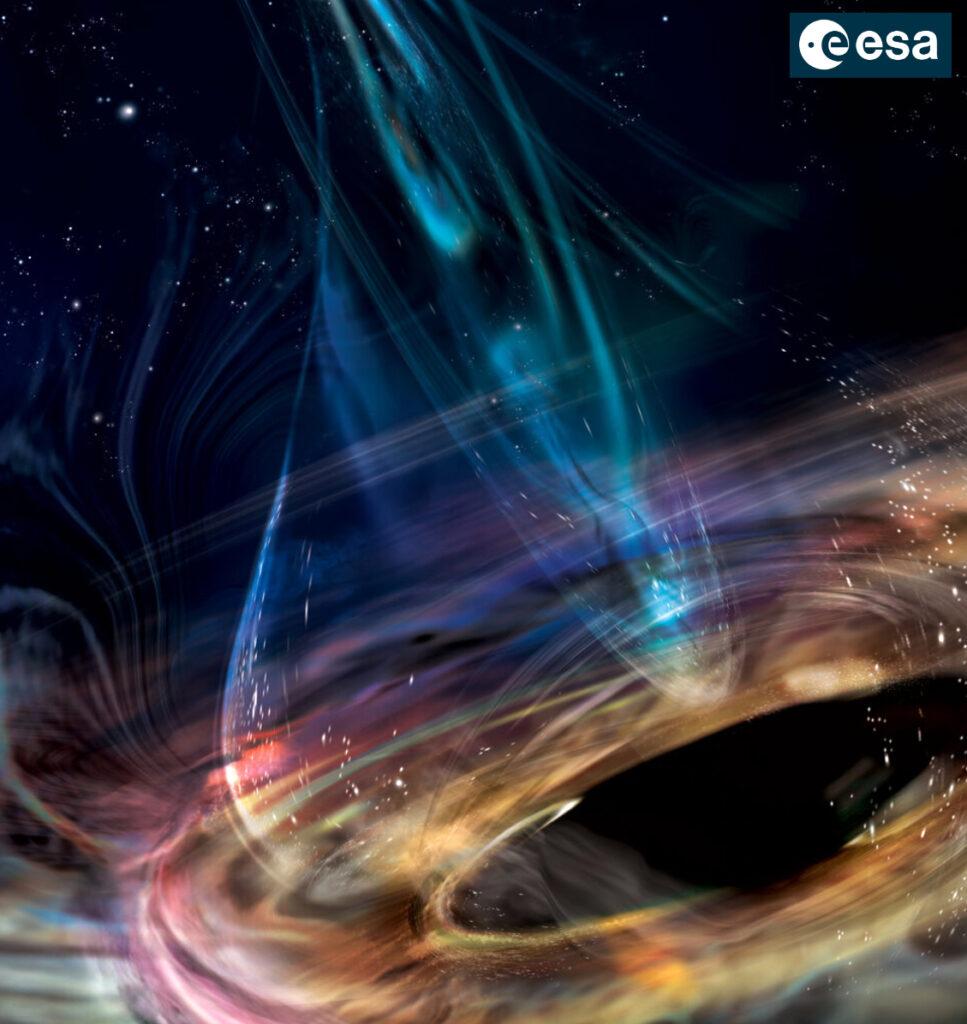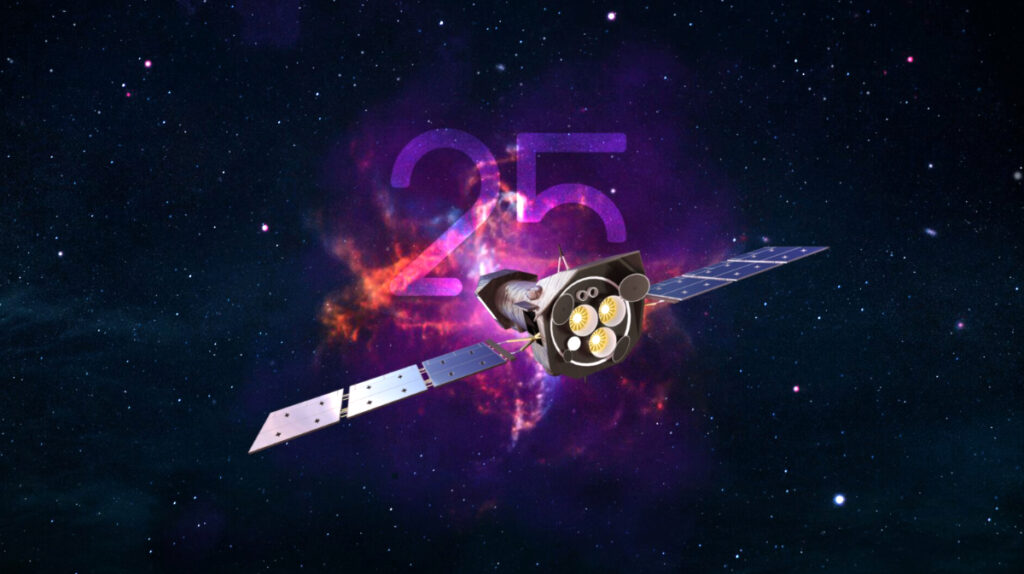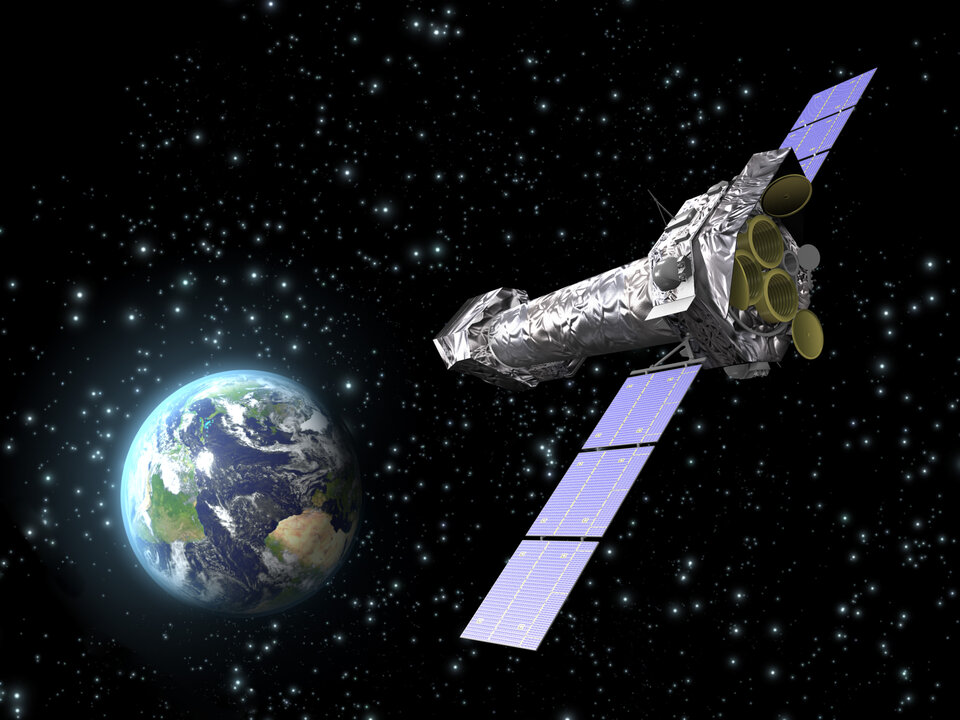XMM-Newton

The European Space Agency’s XMM-Newton has detected rapidly fluctuating X-rays coming from the very edge of a supermassive black hole in the heart of a nearby galaxy. The results paint a fascinating picture that defies how we thought matter falls into such black holes, and points to a potential source of gravitational waves that ESA’s future mission, LISA, could see.

XMM-Newton is showing us that black holes devour matter in more complex ways than astronomers first thought. Black holes are predictions of Albert Einstein’s theory of general relativity. They are gravitational monsters that imprison any piece of matter or energy that crosses their ‘surface’, a region of spacetime known as the event horizon.
During its final descent into the black hole, a process known as accretion, the doomed matter forms a disc around the black hole. The gas in the accretion disc heats up and gives off mostly ultraviolet (UV) light.
The UV rays interact with a cloud of electrically charged gas, or plasma, that surrounds the black hole and accretion disc. This cloud is known as the corona and the interactions give the UV rays energy, boosting them up to X-rays, which XMM-Newton can capture.
XMM-Newton has been observing the supermassive black hole 1ES 1927+654 since 2011. Back then, everything was pretty normal. But in 2018, things changed.
1ES 1927+654 suffered a large outburst that appeared to disrupt its surroundings because the X-ray corona disappeared. Gradually, the corona returned, and by early 2021 normality appeared to have been restored.
Puzzling behavior
However, in July 2022, XMM-Newton started to observe that the X-ray output was varying at levels of around 10% on timescales between 400 and 1000 seconds. Quasi-periodic oscillations (QPO), as this type of variability is called, are notoriously difficult to detect in supermassive black holes.
“This was our first indication that something strange was going on,” says Megan Masterson, PhD student at Massachusetts Institute of Technology, USA, who led the XMM-Newton study.
The oscillations could suggest that a massive object, like a star, is embedded in the accretion disk, and is rapidly orbiting the black hole on its way to being swallowed. As the object gets closer to the black hole, the time it takes to orbit decreases, causing the frequency of the oscillations to increase.
Calculations showed that this orbiting object is probably a stellar corpse known as a white dwarf, with around 0.1 times the mass of the Sun, traveling at an incredible speed. It was completing one orbit of the central monster, covering a distance of around 100 million km, every eighteen minutes or so.
Then things got even weirder.

Over the course of almost two years, XMM-Newton showed that the oscillations were increasing in strength and frequency — but not in the way the researchers expected.
The team assumed that the object’s orbital energy was being emitted as gravitational waves as dictated by general relativity. To test the idea, Megan calculated when this object would cross the event horizon, disappear from view, and the oscillations would stop. It turned out to be 4 January 2024.
“I’ve never in my career been able to make a prediction that precisely before,” says Erin Kara, Massachusetts Institute of Technology, and Megan’s PhD supervisor.
XMM-Newton investigates further
In March 2024, XMM-Newton looked again — and the oscillations were still there. The object was now traveling at about half the speed of light and completing an orbit every seven minutes. Whatever was in the accretion disc, it was stubbornly refusing to be devoured by the black hole. Either there were more than just gravitational waves at play, or the entire hypothesis needed to change.
The researchers also considered another possibility for the origin of the oscillations. Remembering the disappearance of the X-ray corona in 2018, they wondered whether this cloud itself could be oscillating.
The trouble was that there is no established theory to explain such behavior and so with no clear path to further this idea, they returned to the original model, and realized that there was a way to modify it.
Astronomers have discovered pairs of white dwarfs gradually spiraling towards each other. As they close in, instead of remaining intact, one can start pulling matter off the other, and this slows down the approach of the two objects. Could the same be happening here and instead of heading intact into the black hole, the white dwarf is being slowly ripped apart?
There is a way to decide.
LISA’s future study
In the 2030s, ESA will launch the Laser Interferometer Space Antenna (LISA), which is designed to detect gravitational waves in exactly the frequency range that 1ES 1927+654 is emitting. “We predict that if there is a white dwarf in orbit around this supermassive black hole, LISA should see it,” says Megan. If so, it would be a fascinating look at what happens so close to the gravitational monster.
“This is another great example of XMM-Newton’s unique abilities. It was critical to this result and is the only observatory capable of capturing this QPO signal with such clarity. The detection relied on XMM-Newton’s exquisite combination of long observations, large collecting area across the entire X-ray band, and timing resolution,” says Norbert Schartel, ESA XMM-Newton Project Scientist.

